東京書籍 中学2年生 NEW HORIZON(ニューホライズン) Let’s Read1の本文の日本語訳と重要箇所の解説です。
- Let’s Read1 本文と日本語訳
- Let’s Read1 重要事項の解説
- When we need to see the time, we look at clocks or watches.
- Today we can check the time very easily.
- However, it was not so easy long ago.
- Time keeping has a very interesting history.
- Ancient people used nature to read the time.
- About 6,000 years ago, Egyptians used the sun.
- They put sticks in the ground, and the shadows told them the time.
- These were some of the first clocks in the world.
- About 3,500 years ago, Egyptians started to measure time without it.
- They put water in pots. The pots had tiny holes in them.
- The water decreased little by little.
- The lines in the pots told them the time.
- They burned candles, for example.
- The candles gave them light, and people saw the time by the lines on them.
- About 700 years ago, people started to make mechanical clocks.
- At first, they used weights to power these clocks.
- The clocks told the hour with bells.
- However, the weights were big and heavy, so these clocks were difficult to move.
- About 500 years ago, people improved their clocks.
- They used springs to power the clocks.
- The springs were small and light.
- So people could move the clocks easily.
- Eventually, people began to carry watches.
- Today, we have clocks and watches everywhere.
- This is the result of many great inventions and many people’s efforts.
- Even now, clocks and watches are improving.
- We cannot really see time, but ancient people tried to recognize it.
- They used different ideas and technologies to measure it.
- When we look at our clocks and watches, we can easily see the time.
- Now it is time to recognize the wisdom of those ancient people.
- Let’s Read1 まとめ
Let’s Read1 本文と日本語訳
History of Clocks 「時計の歴史」
Do you have a clock?
「あなたは時計を持っていますか?」
Why did people make clocks?
「なぜ人は時計を作ったのでしょうか?」
When we need to see the time, we look at clocks or watches.
「私たちは時間を見る必要があるとき,時計か腕時計を見ます。」
Today we can check the time very easily.
「今日では,時間をとても簡単に確認できます。」
However, it was not so easy long ago.
「しかし,ずっと前はそれほど簡単ではありませんでした。」
Time keeping has a very interesting history.
「時間の計測にはとても面白い歴史があります。」
Ancient people used nature to read the time.
「古代の人々は時間を読むために自然を使っていました。」
About 6,000 years ago, Egyptians used the sun.
「約6000年前,エジプト人は太陽を使いました。」
They put sticks in the ground, and the shadows told them the time.
「彼らは地面に棒を置き,影によって時間を把握しました。」
These were some of the first clocks in the world.
「これは世界で最初の時計の一部でした。」
At night, people could not use the sun.
「夜は,太陽を使うことはできませんでした。」
About 3,500 years ago, Egyptians started to measure time without it.
「約3500年前,エジプト人は太陽を使わずに時間を計り始めました。」
They put water in pots. The pots had tiny holes in them.
「彼らは壺に水を入れました。壺の中にはとても小さな穴がありました。」
The water decreased little by little.
「水は少しずつ減っていきました。」
The lines in the pots told them the time.
「壺の中の線が時間を教えてくれました。」
About 1,500 years ago, other people used fire.
「約1500年前,他の人は火を使いました。」
They burned candles, for example.
「例えば,彼らはろうそくを燃やしました。」
The candles gave them light, and people saw the time by the lines on them.
「ろうそくは彼らに光を与え,そして人々はろうそくの線で時間を見ました。」
About 700 years ago, people started to make mechanical clocks.
「約700年前に,機械時計を作り始めました。」
At first, they used weights to power these clocks.
「最初は,時計を動かすために重りを使っていました。」
The clocks told the hour with bells.
「時計は鐘で時間を教えてくれました。」
However, the weights were big and heavy, so these clocks were difficult to move.
「しかし,重りは大きくて重かったので,時計は移動させにくかったです。」
About 500 years ago, people improved their clocks.
「約500年前に,時計を改良しました。」
They used springs to power the clocks.
「時計を動かすためにバネを使いました。」
The springs were small and light.
「バネは小さく軽かったです。」
So people could move the clocks easily.
「だから簡単に時計を動かすことができました。」
Eventually, people began to carry watches.
「最終的に,人は時計を運び始めました。」
Today, we have clocks and watches everywhere.
「今日では,あらゆるところに時計と腕時計があります。」
This is the result of many great inventions and many people’s efforts.
「これは多くの偉大な発明と多くの人の努力の結果です。」
Even now, clocks and watches are improving.
「いまだに,時計と腕時計は改良され続けています。」
We cannot really see time, but ancient people tried to recognize it.
「私たちは本当に時間を見ることはできませんが,古代の人々は時間を認識しようとしていました。」
They used different ideas and technologies to measure it.
「彼らは時間を計るために様々なアイディアと科学技術を使いました。」
When we look at our clocks and watches, we can easily see the time.
「私たちは時計と腕時計を見れば,簡単に時間が分かります。」
Now it is time to recognize the wisdom of those ancient people.
「今,古代の人々の知恵を認識すべきときです。」
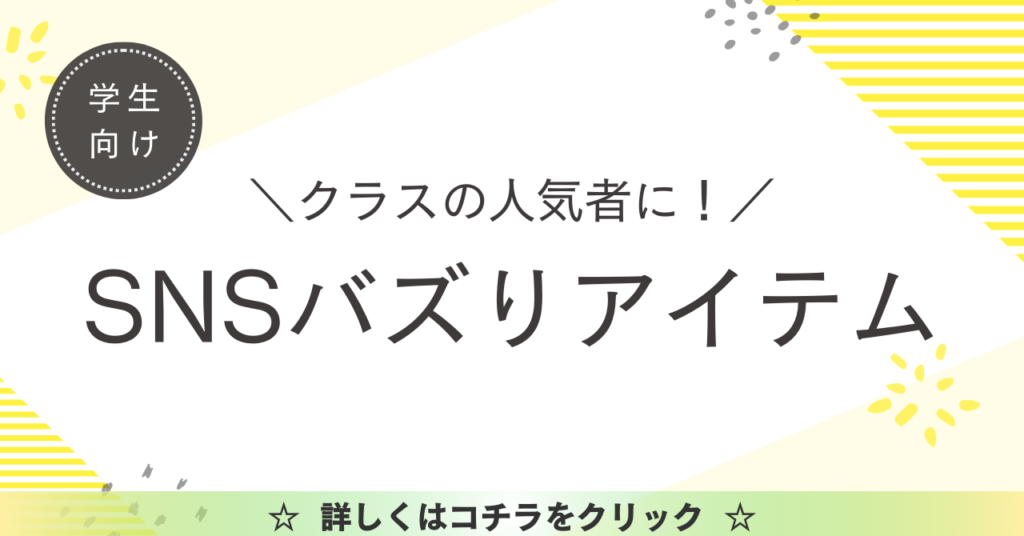
Let’s Read1 重要事項の解説
When we need to see the time, we look at clocks or watches.
この文では「接続詞when」が使われていますね。
“need”は「を必要とする」という動詞で,“need to 動詞の原形”は「不定詞の名詞的用法」になります。
“clock”は「(固定式の)時計」で,“watch”は「腕時計」ですね。
Today we can check the time very easily.
“check”は「~を確認する」という動詞です。“easily”は「簡単に」という副詞ですね。
However, it was not so easy long ago.
“however”は「しかし」という意味の副詞になります。
同じ意味で“but”がありますが,こちらは接続詞なので品詞が異なります。“but”は“文A,but 文B”というように,2つの文を繋ぐ際に使います。
“文A. But 文B.”というように,“but”を文の先頭に置いて1文だけで完結させるのは原則NGとなります。
“so”は接続詞で「だから」,副詞で「とても」という意味ですが,否定文で使うと「それほど」という意味になりますよ。
“long ago”は「ずっと前に」という意味になります。
Time keeping has a very interesting history.
“time keeping”は「時間の計測,時間の管理」という意味になります。
“history”は「歴史」という名詞ですね。
Ancient people used nature to read the time.
“ancient”は「古代の」という形容詞です。“nature”は「自然」という名詞ですね。
“to read”は「不定詞の副詞的用法」になります。
About 6,000 years ago, Egyptians used the sun.
“about”は「約,およそ」という副詞として使われています。
“sun”は「太陽」という名詞ですね。
They put sticks in the ground, and the shadows told them the time.
“put”は「~を置く」という動詞で,過去形も過去分詞形も同じ形になります。
“stick”は「棒」,“ground”は「地面」,“shadow”は「影」という名詞ですね。
“tell 人 もの”で「人にものを伝える,教える」となって,“tell もの to 人”でも同じ意味になります。
他には“show”, “tell”, “give”などが同じ使い方をできるので必ず書き換えられるようにしておきましょう。
直訳すると「影は彼らに時間を教えた」となりますが,訳は少し変えています。
These were some of the first clocks in the world.
“these”は“this”の複数形で「これらは,これらの」という意味です。
“some of~”は「~のいくつか,一部」という意味で,“first”は「最初の」という形容詞です。
About 3,500 years ago, Egyptians started to measure time without it.
“measure”は「を測る,計測する」という動詞です。
“to measure”は「不定詞の名詞的用法」になっていますね。
“without”は「~なしで」という重要な前置詞になります。
“it”は“the sun”を指しています。
They put water in pots. The pots had tiny holes in them.
“put A in B”は「AをBに入れる」という表現です。“pot”は「壺,かめ」という名詞ですね。
“tiny”は「ごく小さな」という形容詞で,“hole”は「穴」という名詞になります。
“them”は“The pots”を指しています。
The water decreased little by little.
“decrease”は「減る」という動詞です。
“little by little”は「少しずつ」という表現になります。
The lines in the pots told them the time.
“line”は「線」という名詞です。
“tell 人 もの”で「人にものを伝える,教える」となって,“tell もの to 人”でも同じ意味になりましたね。
They burned candles, for example.
“They”は“other people”を指しています。
“burn”は「を燃やす」という動詞で,“candle”は「ろうそく」という名詞になります。
“for example”は「例えば」という重要表現です。
The candles gave them light, and people saw the time by the lines on them.
“give 人 もの”で「人にものをあげる」となって,“give もの to 人”でも同じ意味になります。
“them”は“other people”を指しています。“light”は「光」という名詞ですね。
“by”は色々な意味を持つ前置詞で,今回は「~によって」となります。以下に意味をまとめておきます。
最後の“them”は“The candles”を指しています。
1.受動態とセットで「~によって」
2.”by+乗り物”で「交通手段」
3.「~までに」という期限
4.「~のそばに」という場所を表す
About 700 years ago, people started to make mechanical clocks.
“mechanical”は「機械の」という形容詞です。
“to make”は「不定詞の名詞的用法」になっていますね。
At first, they used weights to power these clocks.
“at first”は「まず,最初に」という重要表現です。
“weight”は「重り,重さ」という名詞で,“power”は「~に動力を供給する」という動詞です。今回は「を動かす」と訳しました。
そして“to power”は「不定詞の副詞的用法」になっていますね。
The clocks told the hour with bells.
“hour”は「時間」,“bell”は「鐘」という名詞になります。
“with”は前置詞で「~と一緒に」と訳すことが多いですが,必ずしも後ろに人が来るわけではありません。イメージとして「~とセットで」と覚えておきましょう。
訳し方としては「~を使って」「~で」など文脈に合わせて柔軟に変えてあげましょう。
However, the weights were big and heavy, so these clocks were difficult to move.
“heavy”は「重い」,“difficult”は「難しい」という形容詞になります。
“move”は「動く,動かす,引っ越す」という動詞ですね。
“to move”は「不定詞の副詞的用法」になっていて,“difficult”を修飾しています。
About 500 years ago, people improved their clocks.
“improve”は「を向上させる,改良する」という動詞です。
They used springs to power the clocks.
“spring”は「バネ」という名詞で,“to power”は「不定詞の副詞的用法」になっていますね。
The springs were small and light.
“light”は形容詞で「明るい,軽い」という意味があります。今回は「軽い」ですね。
So people could move the clocks easily.
“could”は“can”の過去形ですね。
Eventually, people began to carry watches.
“eventually”は「最終的に,結局」という副詞です。
“began”は“begin(を始める)”の過去形ですね。“carry”は「を運ぶ」という動詞です。
“to carry”は「不定詞の名詞的用法」になっていますね。
Today, we have clocks and watches everywhere.
“we have~”は「~がある」と訳します。“we”を訳す必要はありません。
“everywhere”は「あらゆるところに」という副詞ですね。
This is the result of many great inventions and many people’s efforts.
“result”は「結果」,“invention”は「発明」,“effort”は「努力」という名詞ですね。
“of”は前置詞で,”A of B”の形で「BのA」というように後ろから前に訳します。
名詞に‘sを付けると「~の」という所有を表します。
直前の名詞が複数形のときは” teachers‘ “のようにアポストロフィーだけを最後に付けます。
Even now, clocks and watches are improving.
“even”は「~さえ」という強調を表す副詞です。今回は“Even now”で「いまだに」としました。
また,この文は「現在進行形」が使われていますね。
We cannot really see time, but ancient people tried to recognize it.
“try to 動詞の原形”は「~しようとする」という意味で,挑戦してみたけどダメだったというようなニュアンスで使われることが多いです。難しいといった意味合いが含まれるということですね。
一方で“try 動名詞”は,「(試しに)~してみる」という表現になります。つまりその行為自体はできたという意味合いになります。
“recognize”は「を認識する」という動詞になります。
They used different ideas and technologies to measure it.
“different”は「様々な,異なった」という形容詞です。
“technology”は「科学技術」という名詞ですね。
When we look at our clocks and watches, we can easily see the time.
この文では「接続詞when」が使われていますね。
Now it is time to recognize the wisdom of those ancient people.
“it is time to 動詞の原形”は「~すべき時間だ」という意味です。“to recognize”は「不定詞の形容詞的用法」になっていますね。
“wisdom”は「知恵,英知」という名詞ですね。
“those”は“that”の複数形で「あれらは,あれらの」という意味ですが,今回は特に訳していません。
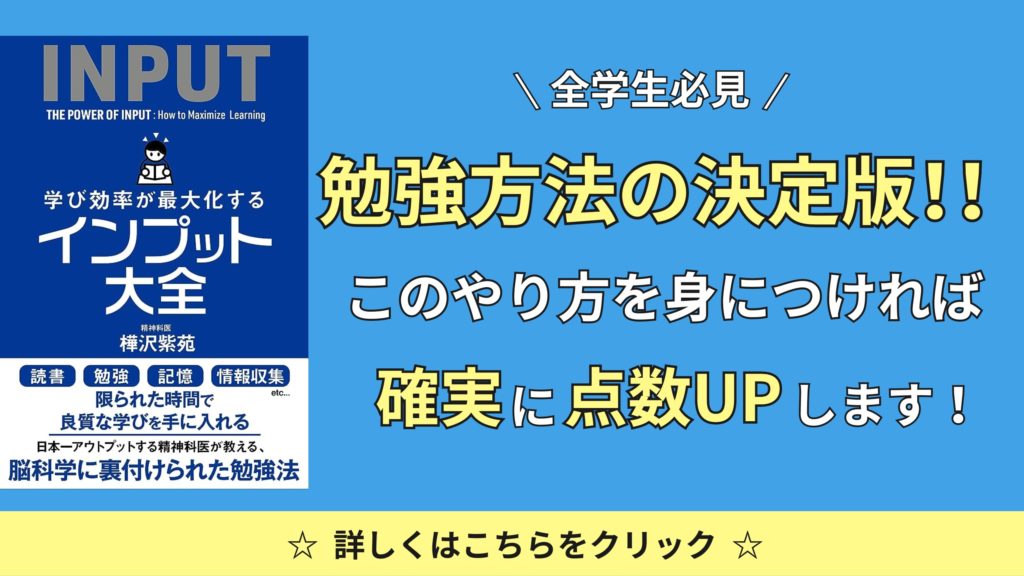
Let’s Read1 まとめ
以上がLet’s Read1の日本語訳となります。
ここでは今までに習った文法がたくさん使われていますね。どれも大切な文法なのでしっかり理解していきましょう!
特に「不定詞」はしっかりと押さえましょう!
何か分からない点や他に解説してほしい点があれば,お気軽にコメントしてください!
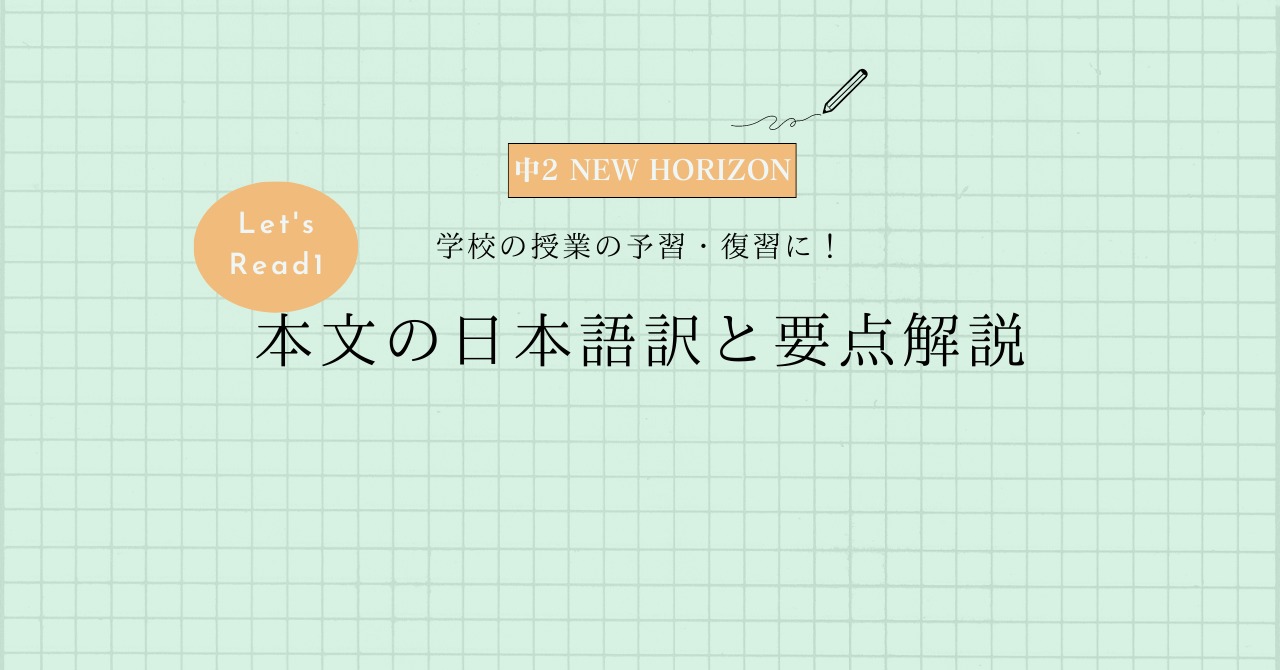


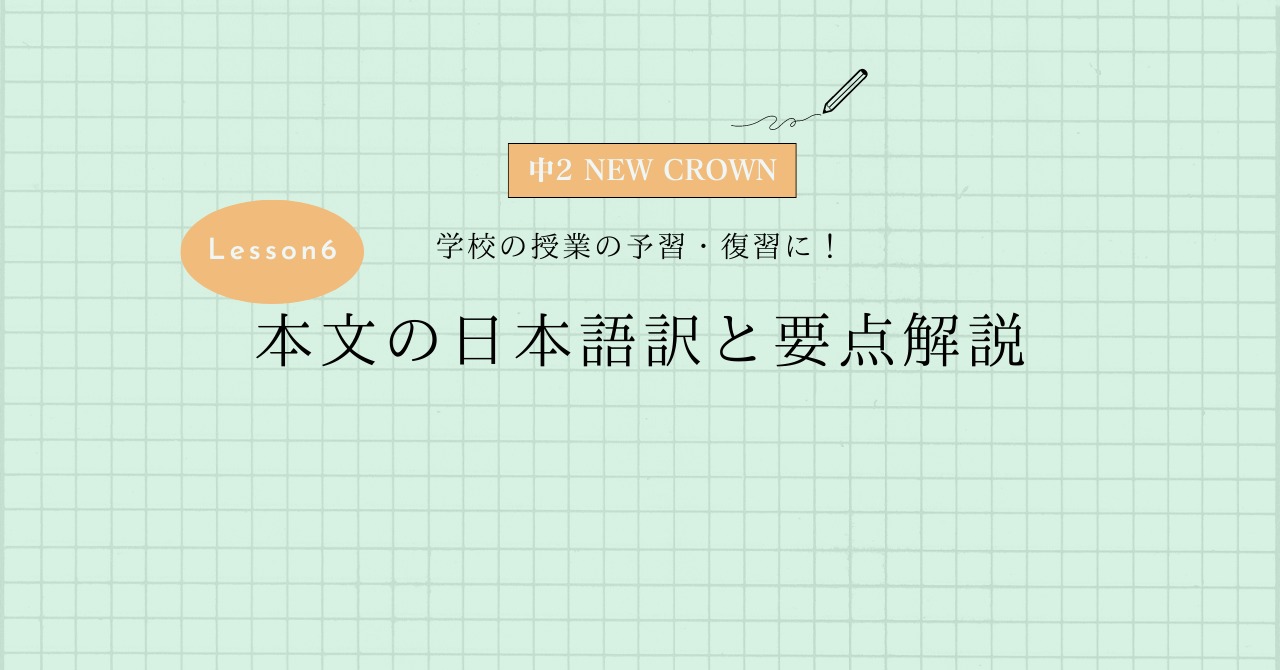
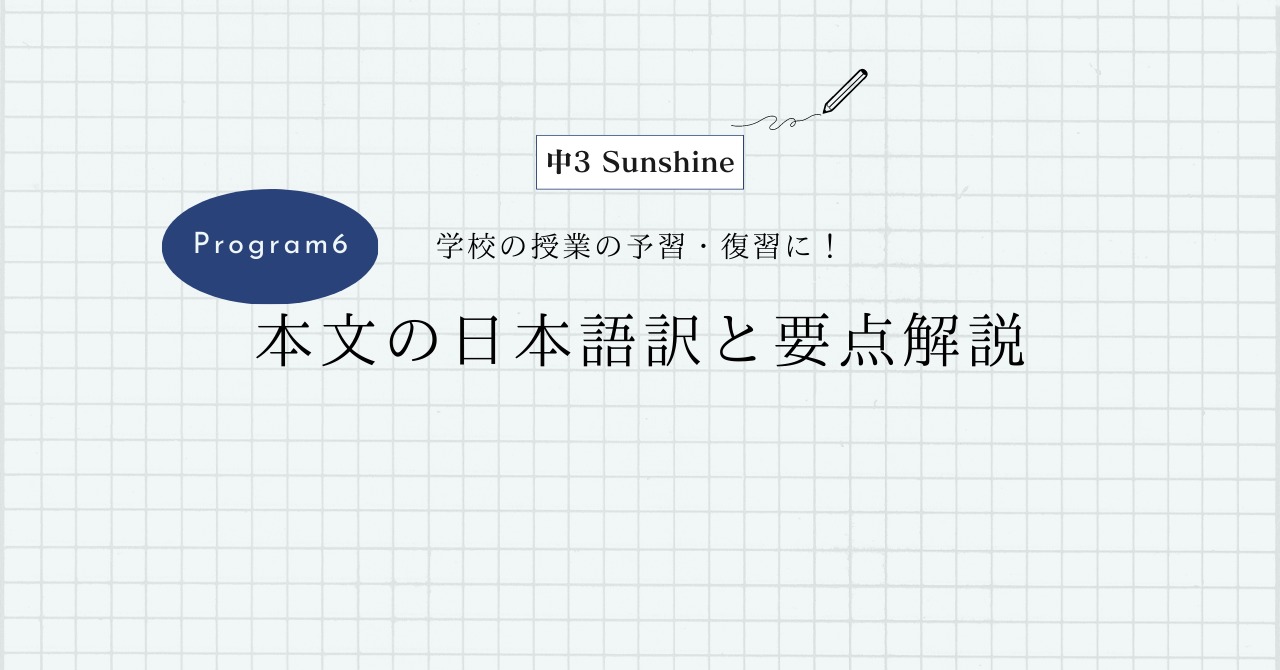
コメント